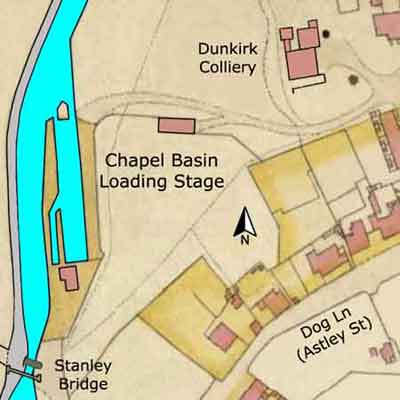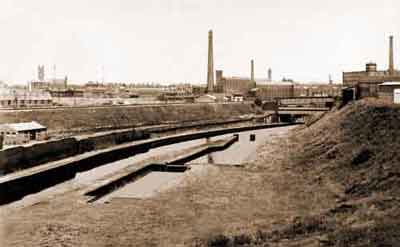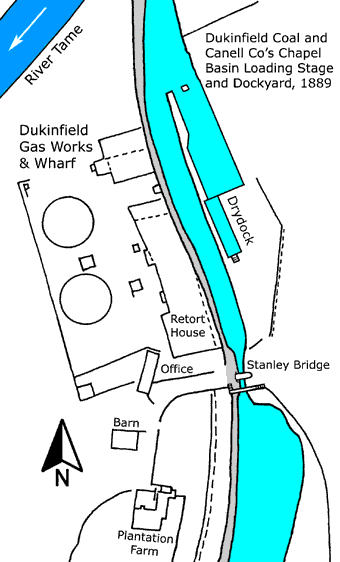
Initially, the Dunkirk Coal Company operated Chapel Basin Loading Stage where boats were loaded with coal brought to it by horse and cart from the nearby Dunkirk Colliery (aka Chapel Pit). A second colliery in close proximity was Dog Lane Colliery and coal destined for the basin from this was also brought to it by horse and cart. Later, it is understood that a tramway was constructed to connect Dog Lane Colliery to Chapel Basin but its exact route is uncertain. It is possible that the route taken was first along Dog Ln (now Astley St) and then part way down what is now Charles St.
For Dunkirk Coal Company click here » Dunkirk Coal Co
Records of Dunkirk Colliery do not seem to have survived but it is known that Dog Lane Colliery was somewhat smaller than others owned by the company. In 1896 there were 26 underground workers and six surface workers, the Manager and Under Manager being R Clay and William Hyde, respectively. The seam worked was the Sod Mine and the type of coal was manufacturing coal.
Nowadays, there is no trace of these collieries. The site of Dunkirk Colliery is partly below the former Stamford Works of William Kenyon & Sons Ltd, off Railway St, and the site of Dog Lane Colliery is on the south side of Astley St adjoining its intersection with Railway St. In 2007, Stamford Works was demolished and replaced by a block of apartments.

Chapel Basin Loading Stage
Lower Peak Forest Canal
Grid Ref: SJ 934 979
Tithe Map: 1850, Ref: EDT 143/2
Courtesy: Cheshire Archives & Local Studies


The presence of a drydock at Chapel Basin shows that the company operated its own coal boats. A boat needing repair would be floated into the flooded drydock and stop planks would then be inserted down grooves in the sidewalls by the entrance. When these were in place, a valve would be opened to allow water to flow away down a box trunk. The arrangement of this is unknown but it is likely that it was a sluice in a sidewall. However, there is no sign of a sluice mechanism in the photograph. At the head of the dock, steps were provided for workmen to use while they were affecting repairs.
Chapel Basin was filled in, but not destroyed, in 1965.